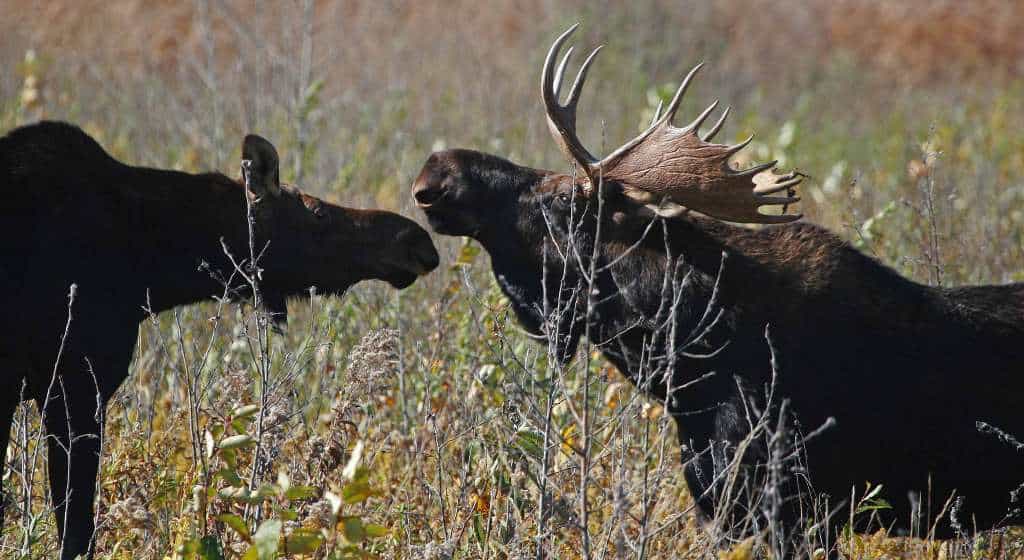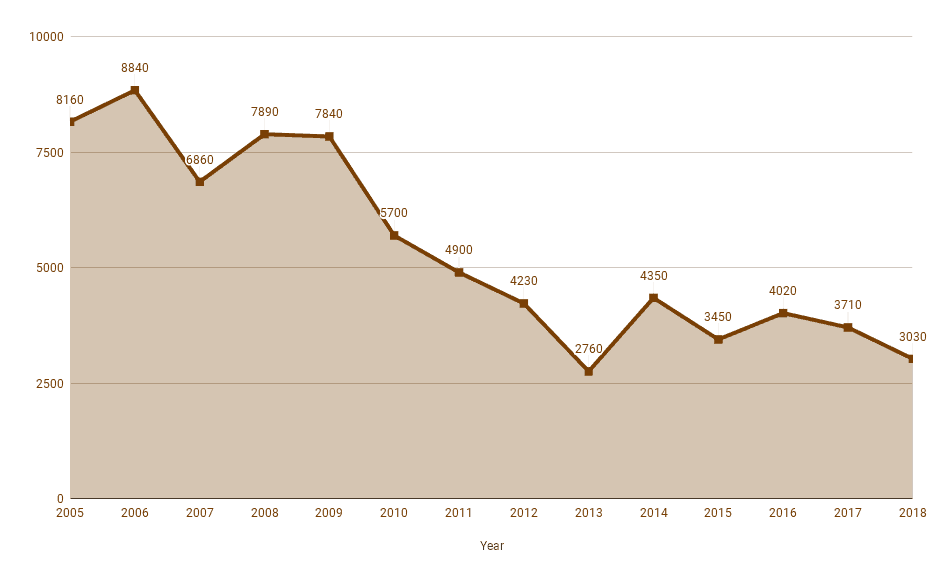
The past decade’s decline of northeastern Minnesota’s moose population seems to have leveled off a little, but biologists are still concerned about their future survival in the state.
This winter’s aerial surveys by the Department of Natural Resources provided an estimate of 3,030 moose in the region, statistically unchanged from last year’s estimate of 3,710. The DNR is 90 percent certain that the population is between 4,140 and 2,320 moose.
The population estimate is 65 percent lower than the peak in 2006 at 8,840 animals, but it has not changed much since 2012.
“While the population appears stable, low numbers of moose are still a major concern for the DNR,” said DNR Commissioner Tom Landwehr. “We continue to pursue the best science, research and management tools available to us to help Minnesota’s moose.”
Northeastern Minnesota moose population estimate since 2005

Moose mortality
Five years of research into the reasons for the shrinking moose population are currently concluding. Over that time, moose have been collared and tracked, and studied after dying to determine the cause of death. Sixty dead moose were retrieved and studied. Scientists have not found a single “silver bullet” to explain the decline, but rather point to several factors.
“I can tell you that the thing that we learned the most is how complex the system really is,” Michelle Carstensen, DNR wildlife health program supervisor, told Minnesota Public Radio News. “I think there was kind of an unreal expectation that we were going to be able to find a smoking gun. And prove definitively that X or Y are causing the moose decline.”
Of the 60 adult moose that died and were able to be studied, about 30 percent were killed by parasites like winter ticks and brainworm, another 30 percent were killed by infections or other health issues, and another 30 percent were killed by wolves (nearly half of the moose killed by wolves had serious underlying health problems that made them easier prey).
Increasing numbers of whitetail deer (which transmit disease) and wolves, as well as habitat loss and climate change all figure into the problem.
The annual moose survey has been happening since 1960. The agency counted moose from the air between Jan. 3 and Jan. 13 in 52 survey plots over a 6,000-square mile region. The Fond du Lac Band of Lake Superior Chippewa and 1854 Treaty Authority supported the survey with funding and personnel.

